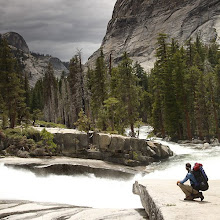A response to my post on February 10th.
On a cold Winter day in December 1944 Pablo Picasso was sitting in his Parisian third floor studio when the German Gestapo paid him a visit. This wasn't a new thing, they'd been harassing the artist for months with allegations of hiding Jewish friends and distributing works of art that had no place in the ever increasing fascist Europe. On a little wooden table there laid a pile of postcards depicting his 1937 painting Guernica, the brutal depiction of the German fire bombing of the Basque country town of the same name. One of the German's picked up a postcard of the painting and asked, did you do this. Picasso simply said, no you did, go on take it, it's a souvenir. Sixty-six years later, on the eve of the American invasion of Iraq, Colon Powell gave a speech at the UN drumming support for the illegal invasion of Iraq which was to be followed by a press conference. At the press conference, behind his podium, hung a life size tapestry of the painting Guernica, 12x22 feet in all. This, as it turns out, just wouldn't do, so instead of heeding the deep symbolic message that lives in the painting, they covered it up. That by my definition is the power of art. A grotesquely, cubist rendition of a Nazi war crime, not photographed but painted in oils, remains as relevant today as it did sixty plus years ago.
Modern art can be the most powerful of mediums, but I still detest blank pieces of paper pinned to the wall.
Cheers All!
2.17.2010
Subscribe to:
Post Comments (Atom)



1 comment:
Interesting! Last night we watched an old B&W movie called The Train about the removal of masterpieces of art by the Germans while occupying Paris. Burt Lancaster comes to the rescue and saves the day (I think, I didn't actually stay for the ending).
Post a Comment